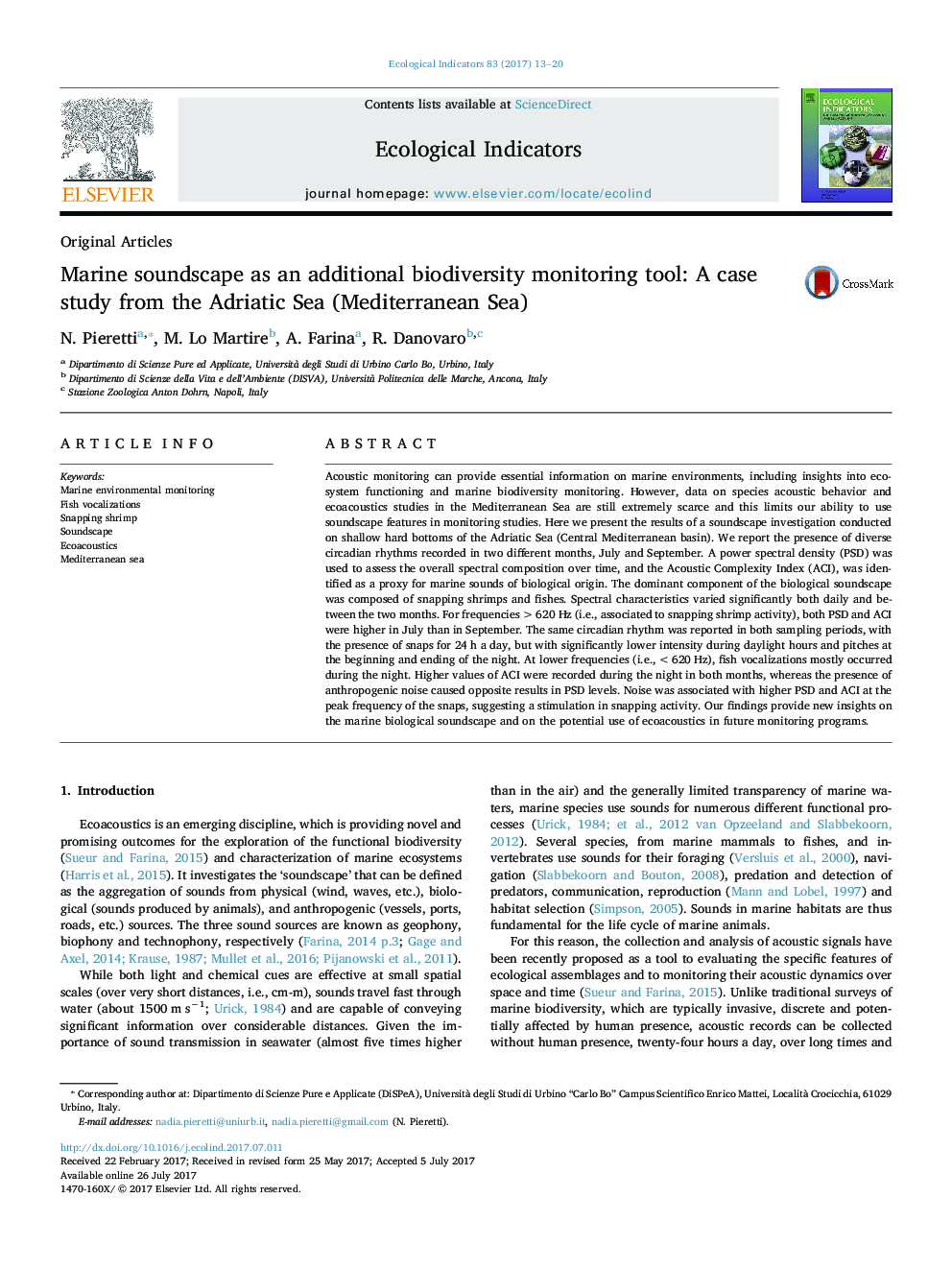| Article ID | Journal | Published Year | Pages | File Type |
|---|---|---|---|---|
| 5741473 | Ecological Indicators | 2017 | 8 Pages |
â¢A soundscape investigation on shallow hard bottoms of the Adriatic Sea is proposed.â¢Daily rhythms, spectral features and their variations in two months are described.â¢Acoustic indices can effectively help in tracking sounds of biological assemblages.â¢This data will create a first benchmark of the soundscape patterns of the area.â¢Monitoring acoustic dynamics can support the management of marine resources.
Acoustic monitoring can provide essential information on marine environments, including insights into ecosystem functioning and marine biodiversity monitoring. However, data on species acoustic behavior and ecoacoustics studies in the Mediterranean Sea are still extremely scarce and this limits our ability to use soundscape features in monitoring studies. Here we present the results of a soundscape investigation conducted on shallow hard bottoms of the Adriatic Sea (Central Mediterranean basin). We report the presence of diverse circadian rhythms recorded in two different months, July and September. A power spectral density (PSD) was used to assess the overall spectral composition over time, and the Acoustic Complexity Index (ACI), was identified as a proxy for marine sounds of biological origin. The dominant component of the biological soundscape was composed of snapping shrimps and fishes. Spectral characteristics varied significantly both daily and between the two months. For frequencies >620Â Hz (i.e., associated to snapping shrimp activity), both PSD and ACI were higher in July than in September. The same circadian rhythm was reported in both sampling periods, with the presence of snaps for 24Â h a day, but with significantly lower intensity during daylight hours and pitches at the beginning and ending of the night. At lower frequencies (i.e., <620Â Hz), fish vocalizations mostly occurred during the night. Higher values of ACI were recorded during the night in both months, whereas the presence of anthropogenic noise caused opposite results in PSD levels. Noise was associated with higher PSD and ACI at the peak frequency of the snaps, suggesting a stimulation in snapping activity. Our findings provide new insights on the marine biological soundscape and on the potential use of ecoacoustics in future monitoring programs.
